- Home
- Kathy Reichs
Deadly Descisions
Deadly Descisions Read online
Deadly Descisions
Kathy Reichs
From Publishers Weekly
Critics (and publicists) often compare Reichs to Patricia Cornwell, as both are women who write bestselling thrillers featuring a female forensic expert. There's a significant difference between them, though. Reichs brings to her grisly novels a scientific detail and authenticity that Cornwell rarely matchesAa virtue arising from Reich's background as a top forensic anthropologist for the governments of North Carolina and Quebec, a background mirrored by that of her heroine, Tempe Brennan. But CornwellAa journalist before she turned novelistAis a more accomplished writer than Reichs, and her more fluid prose and plotting support a heroine who exudes a vitality that Brennan doesn't. Reichs's strengths and weaknesses are apparent in this third novel (after Death du Jour) featuring narrator Brennan, which finds the crime fighter tangling with outlaw motorcycle gangs in Montreal. The novel opens as Brennan, "sorting badly mangled tissue" in an autopsy room, is interrupted by the arrival of another body: that of a girl, nine, caught by a bullet that one gang, the Heathens, had intended for a rival Viper. The mangled tissue belongs to two Heathens who'd been en route to bomb the Vipers' headquarters: war is raging among bikers in Montreal, and Brennan is soon caught in the battles, not least because her visiting nephew, Kit, is enamored with bikersAincluding some involved in the war. The narrative carries Brennan to assorted bikers' hangouts, and to much forensic digging, all of which Reichs handles with an admirable intensity and veracity. Still, the novel has a stiff, storyboarded feel, with a subplot involving Brennan's cop loverAhas he turned gang member?Aparticularly intrusive. The pacing is lopsided, laborious in front and action-stuffed at the back, and the narrative spreads its message about the malfeasance of outlaw bikers with a heavy hand. Overall, the novel works, but the gears show one time too many. Agent, Jennifer Rudolph Walsh at the Writer's Shop. Major ad/promo; 6-city author tour.
Kathy Reichs
Deadly Descisions
The third book in the Temperance Brennan series
Chapter 1
Her name was Emily Anne. She was nine years old, with black ringlets, long lashes, and caramel-colored skin. Her ears were pierced with tiny gold loops. Her forehead was pierced by two slugs from a Cobra 9-mm semiautomatic.
It was a Saturday, and I was working by special request of my boss,Pierre LaManche. I'd been at the lab for four hours, sorting badly mangled tissue, when the door to the large autopsy room opened and Sergeant-Detective Luc Claudel came striding in.
Claudel and I had worked together in the past, and though he'd come to tolerate, perhaps even appreciate me, one would not infer that from his brusque manner
"Where's LaManche?" he demanded, glancing at the gurney in front of me, then quickly away.
I said nothing. When Claudel was in one of his moods, I ignored him.
"Has Dr. LaManche arrived?" The detective avoided looking at my greasy gloves.
"It's Saturday, Monsieur Claudel. He doesn't work" At that moment Michel Charbonneau stuck his head into the room. Through the opening I could hear the whir and clank of the electric door at the back of the building.
"Le cadavre est arrive" Charbonneau told his partner.
What cadaver? Why were two homicide detectives at the morgue on a Saturday afternoon?
Charbonneau greeted me in English. He was a large man, with spiky hair that resembled a hedgehog's.
"Hey, Doc."
"What's going on?" I asked, pulling off my gloves and lowering my mask.
Claudel answered, his face tense, his eyes cheerless in the harsh fluorescent light.
"Dr. LaManche will be here shortly. He can explain."
Already sweat glistened on his forehead, and his mouth was compressed into a thin, tight line. Claudel detested autopsies and avoided the morgue as much as possible. Without another word he pulled the door wide and brushed past his partner. Charbonneau watched him walk down the corridor, then turned back to me.
"This is hard for him. He has kids."
"Kids?" I felt something cold in my chest.
"The Heathens struck this morning. Ever hear of Richard Marcotte?" The name was vaguely familiar.
"Maybe you know him as Araignee. Spider" He curled his fingers like a child doing the waterspout rhyme. "Great guy. And an elected official in the outlaw biker set. Spider is the Vipers sergeant at arms, but he had a real bad day today. When he set out for the gym around eight this morning the Heathens blasted him in a drive-by while his ole lady dove for cover in a lilac bush." Charbonneau ran a hand backward through his hair, swallowed. I waited.
"In the process they also killed a child."
"Oh, God." My fingers tightened around the gloves.
"A little girl. They took her to the Montr‚al Children's Hospital, but she didn't make it. They're bringing her here now Marcotte was DOA. He's ott back."
"LaManche is coming in?" Charbonneau nodded.
The five pathologists at the lab take turns being on call. Rarely does it happen, but if an off-hours autopsy or visit to a death scene is deemed necessary, someone is always available. Today that was LaManche. A child. I could feel the familiar surge of emotions and needed to get away.
My watch said twelve-forty I tore off my plastic apron, balled it together with the mask and latex gloves, and threw everything into a biological waste container. Then I washed my hands and rode the elevator to the twelfth floor.
I don't know how long I sat in my office, staring at the St. Lawrence and ignoring my carton of yogurt. At one point I thought I heard LaManche's door, then the swish of the glass security doors that separate portions of our wing.
Being a forensic anthropologist, I've developed some immunity to violent death. Since the medical examiner turns to me to derive information from the bones of the mutilated, burned, or decomposed, I've seen the worst. My workplaces are the morgue and autopsy room, so I know how a corpse looks and smells, how it feels when handled or cut with a scalpel. I'm accustomed to bloody clothing drying on racks, to the sound of a Stryker saw cutting through bone, to the sight of organs floating in numbered specimen jars.
But I have always been unsettled by the sight of dead children. The shaken baby, the battered toddler, the emaciated child of religious zealots, the preteen victim of a violent pedophile. The violation of young innocents has never failed to agitate and distress me.
Not long ago I had worked a case involving infants, twin boys killed and mutilated. It had been one of the most difficult encounters of my career, and I didn't want to reboard that emotional merry-go-round.
Then again that case had been a source of satisfaction. When the fanatic responsible was locked up and could order no more executions, I felt a genuine sense of having accomplished something good.
I peeled back the cover and stirred the yogurt.
Images of those babies hovered in my mind. I remembered my feelings in the morgue that day, the flashbacks to my infant daughter.
Dear God, why such insanity? The mutilated men I had left downstairs had also died as a result of the current biker war.
Don't get despondent, Brennan. Get angry. Get coldly, resolutely angry. Then apply your science to help nail the bastards.
"Yep," I agreed with myself aloud.
I finished the yogurt, drained my drink, and headed downstairs.
Charbonneau was in the anteroom of one of the small autopsy suites, flipping pages in a spiral notebook. His large frame overflowed a vinyl chair opposite the desk. Claudel was nowhere to be seen.
"What's her name?" I asked.
"Emily Anne Toussaint. She was on her way to dance class."
"Where?"
"Verdun." He tipped his head toward the adjoining room. "LaManche has begun the post."
I slipped past the detective into the autopsy room.
A photographer was taking pictures while the pathologist made notes and shot Polaroid backups.
I watched LalManche grasp a camera by its side handles, then raise and lower it above the body. As the lens moved in and out of focus a small dot blurred then condensed over one of the wounds in the child's forehead. When the perimeter of the dot grew sharp, LaManche depressed the shutter release. A white square slid out and he pulled it free and added it to a collection on the side counter.
Emily Anne's body bore evidence of the intensive effort to save her life. Her head was partly bandaged, but I could see a clear tube protruding from her scalp, inserted to monitor intracranial pressure. An endotracheal tube ran down her throat and into her trachea and esophagus, placed in order to oxygenate the lungs and to block regurgitation from the stomach. Catheters for IV infusion remained in her subclavian, inguinal, and femoral vessels, and the circular white patches for EKG electrodes were still pasted to her chest.
Such a frantic intervention, almost like an assault. I closed my eyes and felt tears burn the backs of my lids.
I dragged my eyes back to the small body. Emily Anne wore nothing but a plastic hospital bracelet. Next to her lay a pale green hospital gown, bundled clothing, a pink backpack, and a pair of high-top red sneakers.
The harsh fluorescent light. The shining steel and tile. The cold, sterile surgical instruments. A little girl did not belong here.
When I looked up, LaManche's sad eyes met mine. Though neither of us made reference to what lay on the stainless steel, I knew his thoughts. Another child. Another autopsy in this same room. Putting a choke hold on my emotions, I described the progress I was making with my own cases, reassembling the corpses of two bikers who'd been blown apart by their own folly, and asked when anternortem medical records would be available. LaManche told me that the files had been requested and should arrive on Monday.
I thanked him and went to resume my own grim task. As I sorted tissue, I remembered my previous day's conversation with LaManche, and wished I were still in the Virginia woods. Was it only yesterday LaManche had called me there? Emily Anne was alive then.
So much can change in twenty-four hours.
Chapter 2
The day before I had been in Quantico teaching a body recovery workshop at the FBI Academy. My team of evidence recovery technicians was unearthing and mapping its skeleton when I looked up to see a special agent approaching through the trees. He reported that a Dr. LaManche urgently wished to speak to me. Feeling uneasy, I left my team and started out of the woods.
As I threaded my way toward the road, I thought about LaManche and the news his call might bring. I began consulting for the Laboratoire de Sciences Judiciaires et de Médecine Légale after going to Montreal in the early nineties as part of a faculty exchange between McGill and my home university in Chariotte. Knowing I was certifled by the American Board of Forensic Anthropology, LaManche had been curious as to whether I could be of any use to him.
Quebec Province had a centralized coroner system, with sophisticated crime and medico-legal labs, but no board-certified forensic anthropologist. Then, as now, I served as consultant to the Office of the Chief Medical Examiner in North Carolina, and LaManche wanted me for the LSJML. The ministry funded an anthropology lab, and I enrolled in an immersion course in French. For more than a decade now, the skeletonizcd, decomposed, mummified, burned, or mutilated cadavers of Quebec Province have come to me for analysis and identification. When a conventional autopsy is of no use, I tease what I can from the bones.
Rarely had LaManche left me a message marked urgent. When he had, it had never been good.
Within minutes I crossed to a van parked on the side of a gravel road. I released my hair and ran my fingers backward across my scalp.
No ticks.
After reclipping the barrette, I dug my pack from the back of the van and fished out my cell phone. The tiny screen told me I had missed three calls. I punched up the list of numbers. All three had come from the lab.
I tried dialing, but the signal cut in and out. That's why I'd left the phone in the van. Damn. Though my French had become fluent over the past ten years, background noise and bad connections often caused me problems. Between the language exchange and the weak signal, I'd never get the message straight on this phone. I had to hike down to headquarters.
I unzipped my Tyvek jumpsuit and threw it in a box in the back of the van. Slinging my pack over my shoulder, I headed downhill.
High above the trees a hawk circled some falconid target. The sky was a brilliant blue, with randomly spaced cotton puff clouds drifting leisurely. The course is usually held in May, and we'd worried that this year's April scheduling might mean rain or cooler temperatures. No problem. The mercury was in the high seventies.
As I walked, I took in the sounds around me. My boots crunching on gravel. Birdsong. The whumping of helicopter blades low overhead. The pop of distant gunfire. The FBI shares Quanttco with other federal police agencies and with the Marine Corps, and the activity is constant and very earnest.
The gravel road met blacktop at Hogan's Alley, lust below the simulated town square used by the FBI, DEA, ATE, and others. I skirted far to the left to avoid intruding on a hostage rescue exercise and turned right on Hoover Road downhill to the closest module of a concrete complex of gray and tan with antennae jutting from the highest roofs like new shoots in an old hedge. Crossing a small parking area to the Forensic Science Research and Training Center, I rang a bell at the loading dock.
A side door parted and a man's face appeared in the crack. Though young, he was completely bald, and looked as if he'd been that way for some time.
"Finishing early?"
"No. I need to call my lab."
"You can use my office."
"Thanks, Craig. I'll only be a minute." I hope.
"I'm checking equipment, so take your time.
The academy is often compared to a hamster cage because of the labyrinth of tunnels and corridors connecting its various buildings. But the upper floors are nothing compared with the maze below
We wound our way through an area stacked with crates and cardboard boxes, old computer screens, and metal equipment trunks, down one corridor, then along two others to an office barely large enough to hold a desk, chair, filing cabinet, and bookshelt Craig Beacham worked for the National Center for the Analysis of Violent Crime, NCAVC, one of the major components of the FBI's Critical Incident Response Group, CIRG. For a time the entity had been called the Child Abduction and Serial Killer Unit, CASKU, but had recently reverted to the original name. Since the training of evidence recovery technicians, or ERT's, is one of the functions of NCAVC, it is this unit that organizes the annual course.
When dealing with the FBI, one must be alphabet savvy.
Craig gathered folders from his desk and stacked them on the cabinet.
'At least that will give you some space to take notes. Do you need to close the door?"
"No, thanks. I'm fine."
My host nodded, then disappeared down the hall.
I took a deep breath, made a mental shift to French, and dialed.
"Bonjour, Temperance." Only LaManche and the priest who baptized me have ever used the formal version. The rest of the world calls me Tempe. "Comment ca va?"
I told him I was fine.
"Thank you for calling back. I fear we have a grisly situation up hereand lam going to need your help."
"Oui?" Grisly? LaManehe was not prone to overstatement.
"Les motards. Two more are dead."
Les motards. Bikers. For more than a decade rival outlaw motorcycle gangs had been battling for control of the drug trade in Quebec. I'd worked on several motard cases, gunshot victims who had also been burned beyond recognition.
"So far, this is what the police have reconstructed. Last night three members of the Heathens drove to the Vipers' clubhouse with a powerful homemade bomb. T
he Viper working the surveillance cameras spotted a pair approaching with a large bundle between them. He took a shot and the bomb exploded." LaManche paused. "The driver is in the hospital in critical condition. For the other two, the largest portion of tissue recovered weighs nine pounds."
Ouch.
"Temperance, I've been trying to get in touch with Constable Martin Quickwater. He's there in Quantico, but he's been in a case-review meeting all day."
"Quickwater?" It was not a typical québecois name.
"He's Native. Cree, I think."
"Is he with Carcajou?"
Operation Carcajou is a multi jurisdictional task force created to investigate criminal activities among outlaw motorcycle gangs in the province.
"Old."
"What would you like me to do?"
"Please tell Constable Quickwater what I have told you, and have him contact me. Then I would like you to come here as quickly as possible. We may have difficulty with these identifications.~~
"Have they recovered printable digits or dental fragments?"
"No. And it is not likely."
"DNA?"
"There may be problems with that. The situation is complicated and I would rather not discuss it by phone. Is it possible for you to return earlier than you had planned?"
Following my normal pattern. I'd wrapped up the spring term at UNC-Charlotte in time to teach the FBI course. Now I only had to read the final exams. I'd been looking forward to a brief stay with friends in D.C. before flying to Montreal for the summer The visit would have to wait.
"I'll be there tomorrow
"Merci."
He continued in his very precise French, either sadness or fatigue deepening the timbre of his rich, bass voice.
"This does not look good, Temperance. The Heathens will undoubtedly retaliate. Then the Vipers will draw more blood." I heard him pull a long breath, then exhale slowly. "I fear the situation is escalating to full-scale war in which innocents may perish."

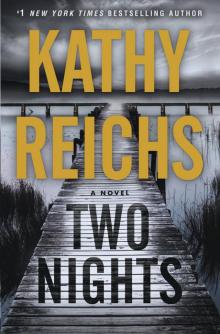 Two Nights
Two Nights The Bone Collection: Four Novellas
The Bone Collection: Four Novellas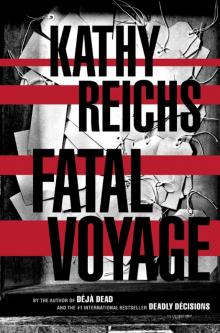 Fatal Voyage
Fatal Voyage 206 Bones
206 Bones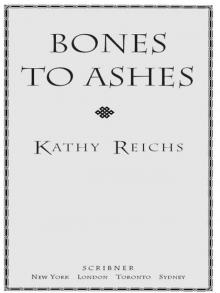 Bones to Ashes
Bones to Ashes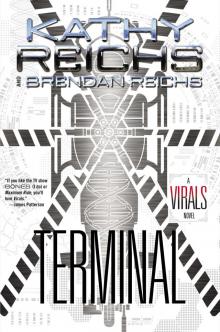 Terminal
Terminal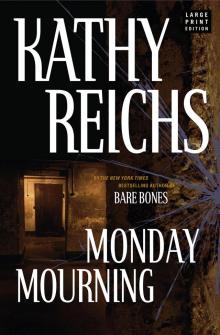 Monday Mourning
Monday Mourning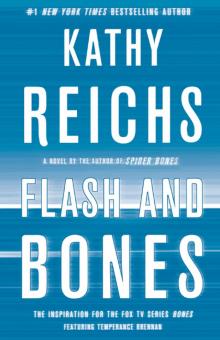 Flash and Bones
Flash and Bones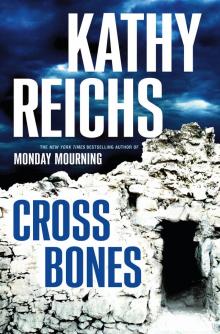 Cross Bones
Cross Bones Devil Bones
Devil Bones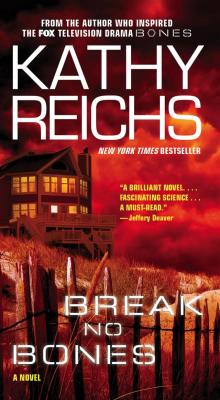 Break No Bones
Break No Bones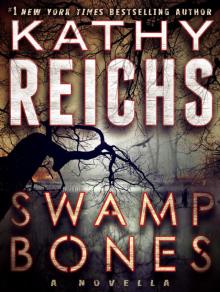 Swamp Bones
Swamp Bones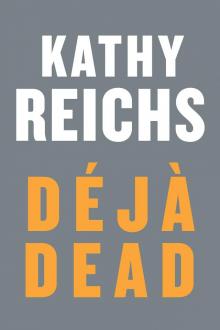 Déjà Dead
Déjà Dead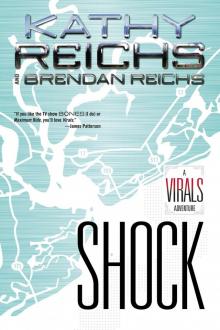 Shock
Shock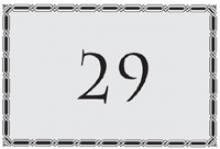 Spider Bones
Spider Bones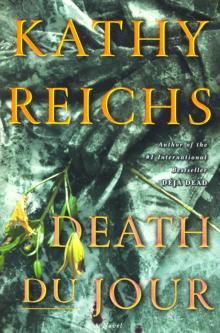 Death Du Jour
Death Du Jour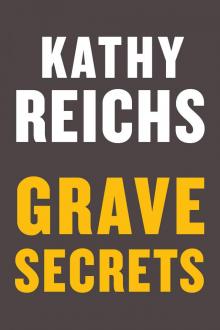 Grave Secrets
Grave Secrets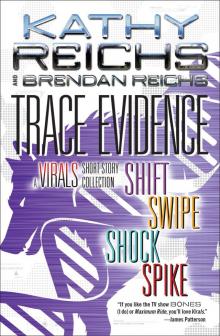 Trace Evidence: A Virals Short Story Collection
Trace Evidence: A Virals Short Story Collection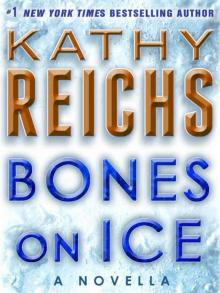 Bones on Ice
Bones on Ice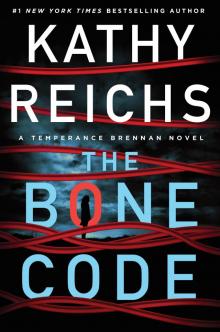 The Bone Code
The Bone Code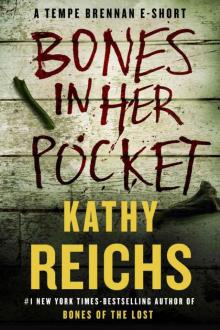 Bones in Her Pocket
Bones in Her Pocket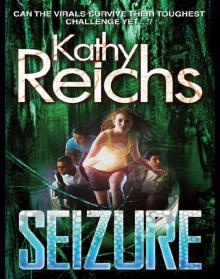 Seizure:
Seizure: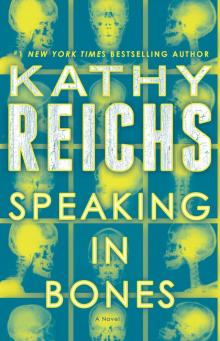 Speaking in Bones
Speaking in Bones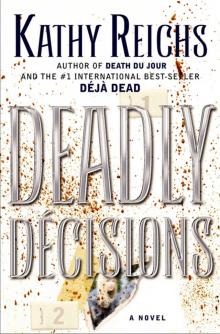 Deadly Decisions
Deadly Decisions Spike
Spike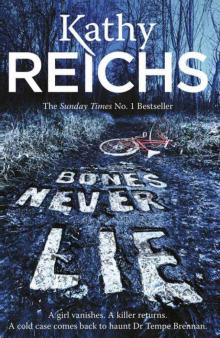 Bones Never Lie
Bones Never Lie Bones of the Lost
Bones of the Lost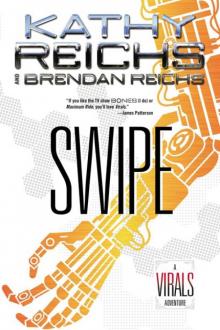 Virals 03.5 - Swipe
Virals 03.5 - Swipe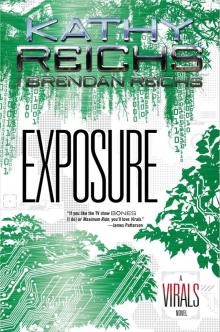 Exposure
Exposure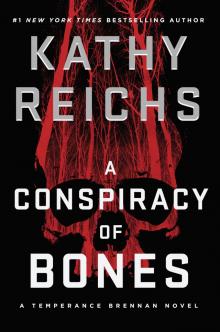 A Conspiracy of Bones
A Conspiracy of Bones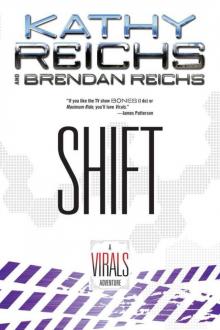 Shift (tory brennan)
Shift (tory brennan)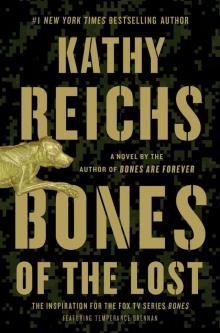 Bones of the Lost: A Temperance Brennan Novel tb-16
Bones of the Lost: A Temperance Brennan Novel tb-16 Virals tb-1
Virals tb-1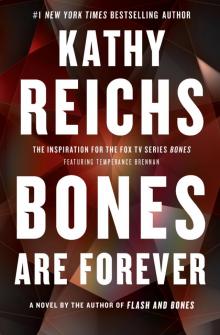 Bones Are Forever tb-15
Bones Are Forever tb-15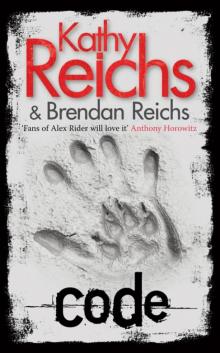 Code tb-3
Code tb-3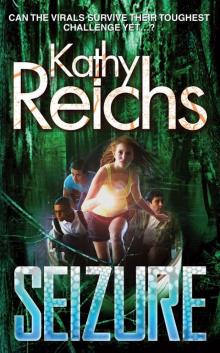 Seizure tb-2
Seizure tb-2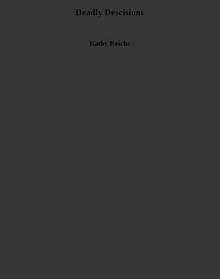 Deadly Descisions
Deadly Descisions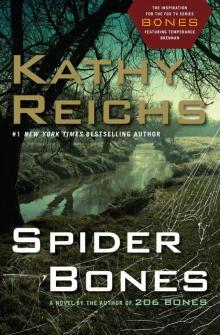 Spider Bones: A Novel
Spider Bones: A Novel